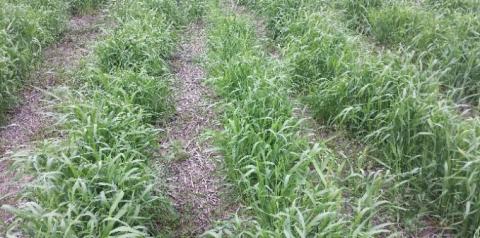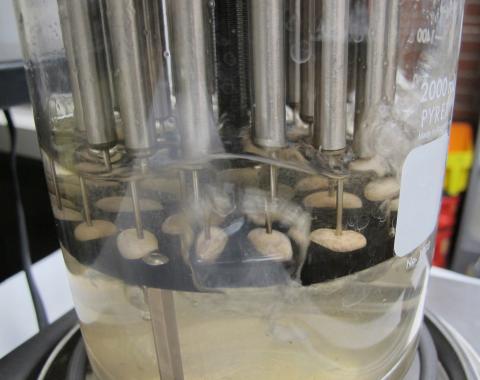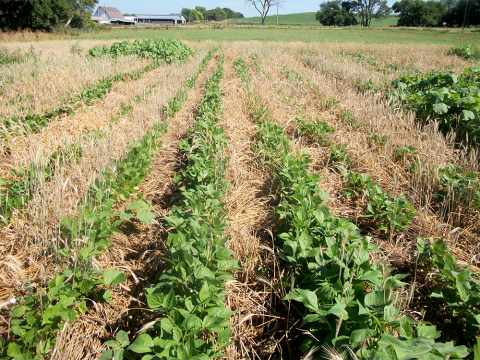Effect of Switchgrass Row Spacing on Inter-Seeded Legume Establishment
March 15, 2019
This project evaluated the effect of switchgrass row spacing on the establishment of Illinois bundleflower, partridge pea, alfalfa, white clover, and hairy vetch.
Burning, Disking, and Spraying Consequences on Big Bluestem Forage Yield, Nutritive Value, and Native Legume Establishment
March 14, 2019
A two-year study evaluated establishment of two native legume species into five-year old established big bluestem pastures and compared seven treatments.
Effect of Row Spacing on Switchgrass Yield and Nutritive Value
March 14, 2019
This study was conducted from 2010 to 2015 to evaluate effects of row spacing on switchgrass forage yield. It compared two varieties: ‘Shawnee’ an upland ecotype, and ‘Kanlow x Summer HP1 NETO2 C1’, an experimental lowland ecotype later released as ‘Liberty’.
How Does Cover Crop Planting Date Affect Soil’s Susceptibility to Water Erosion?
March 11, 2019
This Nebraska student study of how cover crops planted pre- and post-harvest affected soil erodibility found that the amount of water-stable aggregates and biomass production increased with pre-harvest planting.
Cover Crops and Carbon Sequestration: Benefits to the Producer and the Planet
March 11, 2019
This student study of a four-year research project found cover crops may significantly improve soil aggregation and particulate organic matter concentration in the short-term, which suggests the potential for cover crops storing soil carbon in the long term.
NSF Award Boosts Research into Freeze-Tolerant Crops
March 8, 2019
For some plants — like corn — below-zero temperatures trigger a cascade of lethal damage. For others, the damage isn't permanent. UNL biochemist Rebecca Roston is working to identify key properties so one day more freeze-tolerant crops might be developed.
When Developing New Lines of Dry Edible Beans, Cooking Time Matters Too
March 8, 2019
When breeding new lines of dry edible beans, disease resistance, drought tolerance, and plant architecture can be observed in the field, but measuring cooking time is a chore for the laboratory. Cooks prefer varieties that cook in 30-45 minutes.
Production of Soybean or Green Bean Following a Crimped Cover Crop
March 7, 2019
Based on Nebraska research and a review of findings from other studies, best management practices for crimping rye before planting soybean or green bean are explored. Data on degree of weed control and soybean yields are included.







